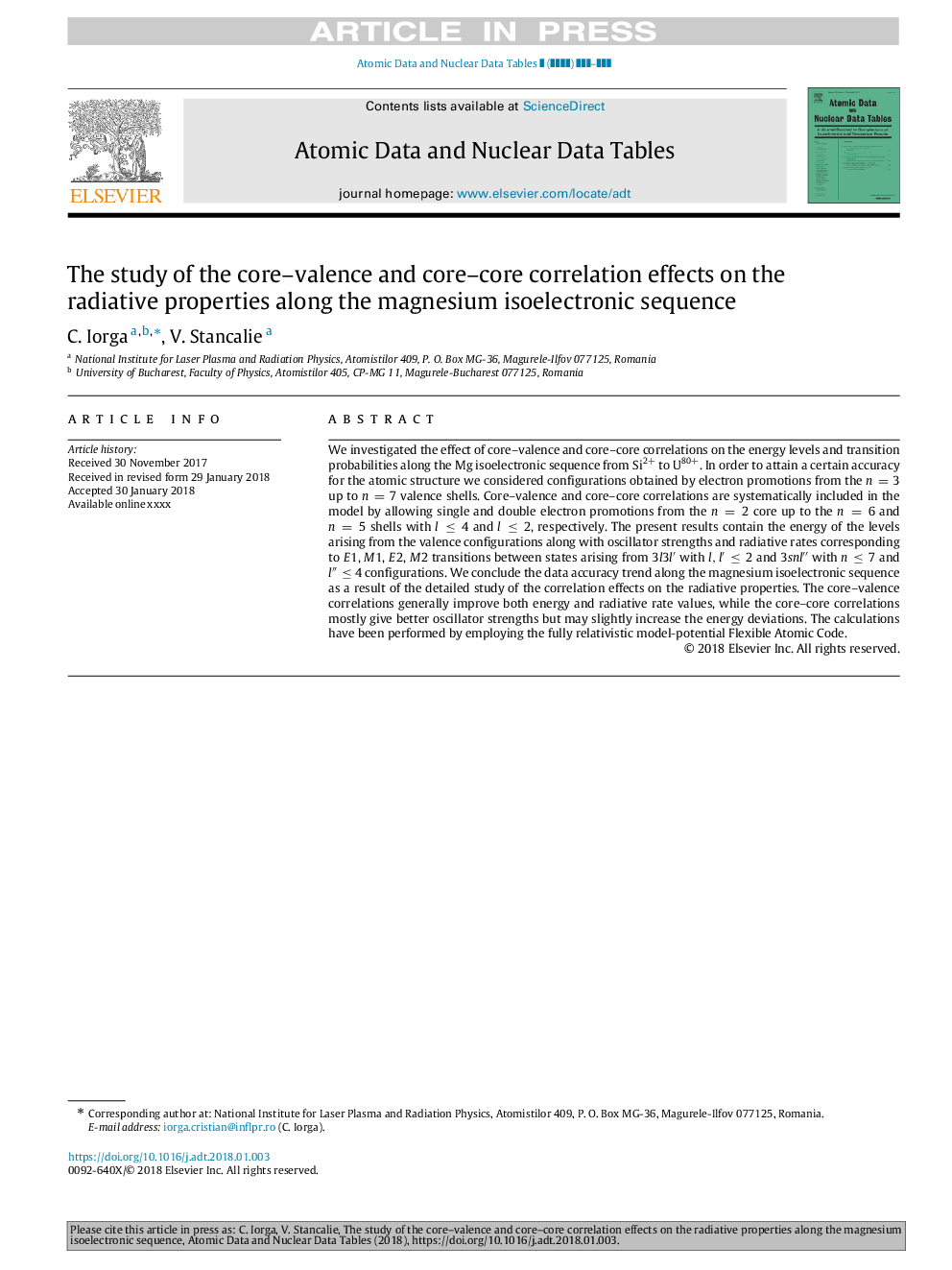| Article ID | Journal | Published Year | Pages | File Type |
|---|---|---|---|---|
| 8182105 | Atomic Data and Nuclear Data Tables | 2018 | 16 Pages |
Abstract
We investigated the effect of core-valence and core-core correlations on the energy levels and transition probabilities along the Mg isoelectronic sequence from Si2+ to U80+. In order to attain a certain accuracy for the atomic structure we considered configurations obtained by electron promotions from the n=3 up to n=7 valence shells. Core-valence and core-core correlations are systematically included in the model by allowing single and double electron promotions from the n=2 core up to the n=6 and n=5 shells with lâ¤4 and lâ¤2, respectively. The present results contain the energy of the levels arising from the valence configurations along with oscillator strengths and radiative rates corresponding to E1, M1, E2, M2 transitions between states arising from 3l3lâ² with l,lâ²â¤2 and 3snlâ²â² with nâ¤7 and lâ²â²â¤4 configurations. We conclude the data accuracy trend along the magnesium isoelectronic sequence as a result of the detailed study of the correlation effects on the radiative properties. The core-valence correlations generally improve both energy and radiative rate values, while the core-core correlations mostly give better oscillator strengths but may slightly increase the energy deviations. The calculations have been performed by employing the fully relativistic model-potential Flexible Atomic Code.
Related Topics
Physical Sciences and Engineering
Physics and Astronomy
Nuclear and High Energy Physics
Authors
C. Iorga, V. Stancalie,
